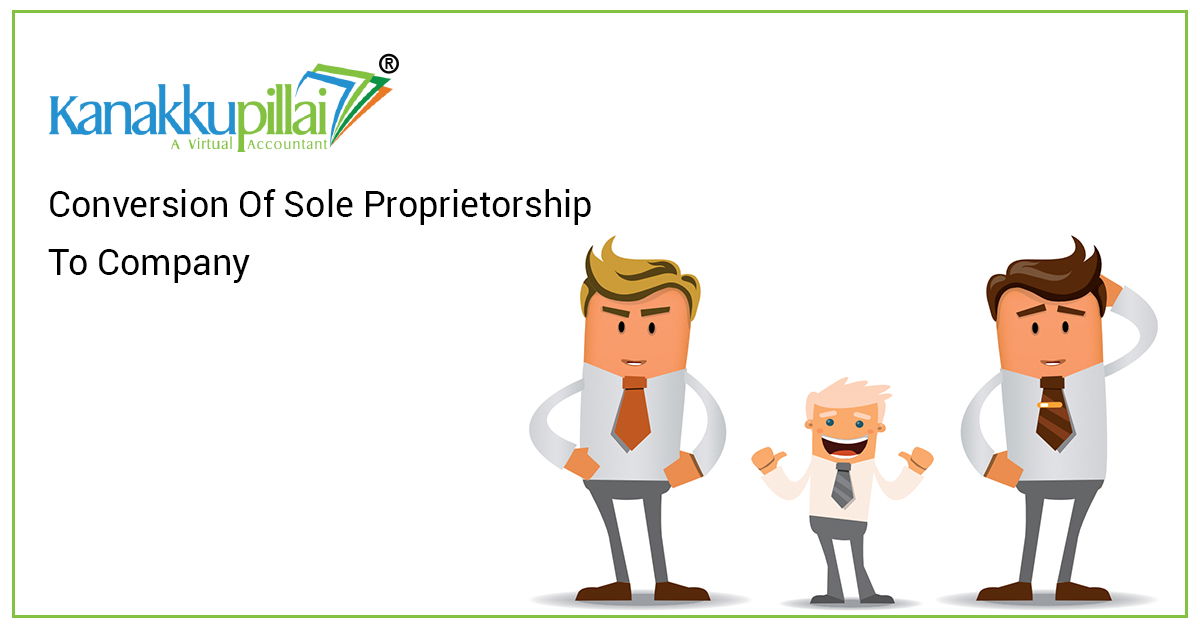A lot of entrepreneurs in India begin their venture business as a sole proprietorship due to its ease of establishment, economic benefits, and minimal compliance. Nevertheless, as the business expands, the disadvantages of sole proprietorship, which include unlimited liability, limited access to capital and limited scalability, become a hindrance. It is at this time that it would be a strategic measure to convert a sole ownership to a private limited company or a one person company (OPC).
It is not only legal restructuring of a sole proprietorship to a company, but it is also opening up new growth opportunities, increasing credibility, and access to investments. This blog will discuss the procedure of converting the sole proprietorship to the company, the advantages, compliance factors and tax implications on the conversion of the sole proprietorship to the company in India.
What is the Reason to Convert a Sole Proprietorship into a Company?
- Limited Liability Protection: The owner is subject to unlimited liability in a sole Proprietorship, i.e. in case of a business debt, the owner can use personal assets to pay off the debt. The limited liability is given by a private limited company, whereby the personal assets are not at risk.
- Enhanced Credibility: The companies that run businesses have more credibility to the clients, vendors, and financial institutions. Brand image and market reputation are enhanced through conversion.
- Easy Access to Capital: Sole proprietorships would not allow the companies to raise funds through issuing shares or raising venture capital. This paves way to growth and expansion.
- Separate Legal Entity: In contrast to sole proprietorships, companies are under the Companies Act, 2013, which treats them as separate legal entities and which guarantees the perpetual succession.
- Tax Benefits: The Income Tax Act allows companies to have several options on tax planning, exemptions, and deductions and this makes companies more tax efficient than sole proprietorships.
Methods of Conversion of Sole Proprietorship to a Company
A sole proprietorship can be changed into a company in two main ways:
1. Changing into a One Person Company (OPC)
- It is the best option in small-sized businesses where the owner would prefer to have full control.
- Offers limited liability and corporate recognition and compliance is easy.
- The Companies Act, 2013, governs them, and only those that have an annual turnover of less than Rs. 2 crores may do so.
2. Incorporation into a Private Limited Company
- Applicable to companies that are interested in growth and scalability.
- The minimum number of directors and shareholders is two.
- More compliance-constrained, but has an increase in credibility and funding options.
How to Convert a Sole Proprietorship to a Company?
Step 1: Digital Signature Certificate (DSC) and Director Identification Number (DIN)
Directors have to acquire DSC and DIN prior to the incorporation of the company.
Step 2: Name Approval
Register the name of the company via the RUN (Reserve Unique Name) service at the MCA portal. The name must portray the existing business, and this can comprise either the name with the addendum of either a Private Limited or OPC Private Limited.
Step 3: Preparation of Memorandum and Articles of Association
MOA states the objectives of the company and AOA establishes management and governance rules.
Step 4: Incorporation Forms
e-MOA (INC-33), e-AOA (INC-34) and other documents that are required and e-MOA and e-AOA on the portal on the MCA.
Step 5: Transfer of Assets and Liabilities
All the assets and liabilities of the sole proprietorship will have to be transferred to the new company. Adequate deals and appraisal reports are to be carried out.
Step 6: Granting of Incorporation Certificate
The Certificate of Incorporation is issued after the ROC verifies that approval has been made. The sole proprietorship has been converted into a company.
Documents Required for Conversion
- PAN card and Aadhaar card of proprietor/ directorships.
- Document identification (passport, voter ID, or driving license)
- Registered office evidence (rent agreement/utility bill/ NOC by owner)
- Digital Signature Certificate (DSC).
- Memorandum and Articles of Association.
- Balance sheet of the sole proprietorship.
- Director and shareholder approval.
Tax Implications of Conversion
- The transfer of assets between the sole proprietorship and company is not regarded as a taxable transfer according to the Income Tax Act, as long as some conditions are satisfied.
- The owner will need to own in the new firm at least 50 percent of stock in the new company and retain ownership no less than 5 years.
- In case the above conditions are met, capital gains exemption is available.
- Other registrations such as GST and PAN have to be updated upon conversion.
Challenges in Conversion
- Compliance Burden – A private limited company has more rigid compliance demands, which include annual filing, board meetings and maintenance of statutory registers.
- Costs – It is more expensive than operating a sole proprietorship as there are legal and professional costs involved.
- Multiplicity of Approvals – The procedure necessitates the liaison with the Ministry of Corporate Affairs, banks and tax agencies.
Advantages of conversion of sole proprietorship to company
- Status of legal recognition and separate entity.
- Better fund-raising capacity.
- Limited liability insurance.
- Greater reputation in the market.
- Tax planning opportunities
- Perpetual succession- business continuity.
Conclusion
Conversion of sole proprietorship to private limited company is a strategic move which offers businesses credibility, a funding option and the benefits of limited liability. Although it includes regulatory compliance, the benefits of the process are more in the long term than the short-term challenges.
Business owners intending to expand the business are highly encouraged to advance their sole proprietorship into a private limited corporation or OPC. This transition would create new growth opportunities and guard business interests once properly documented and legally structured and adhering to legal requirements.





